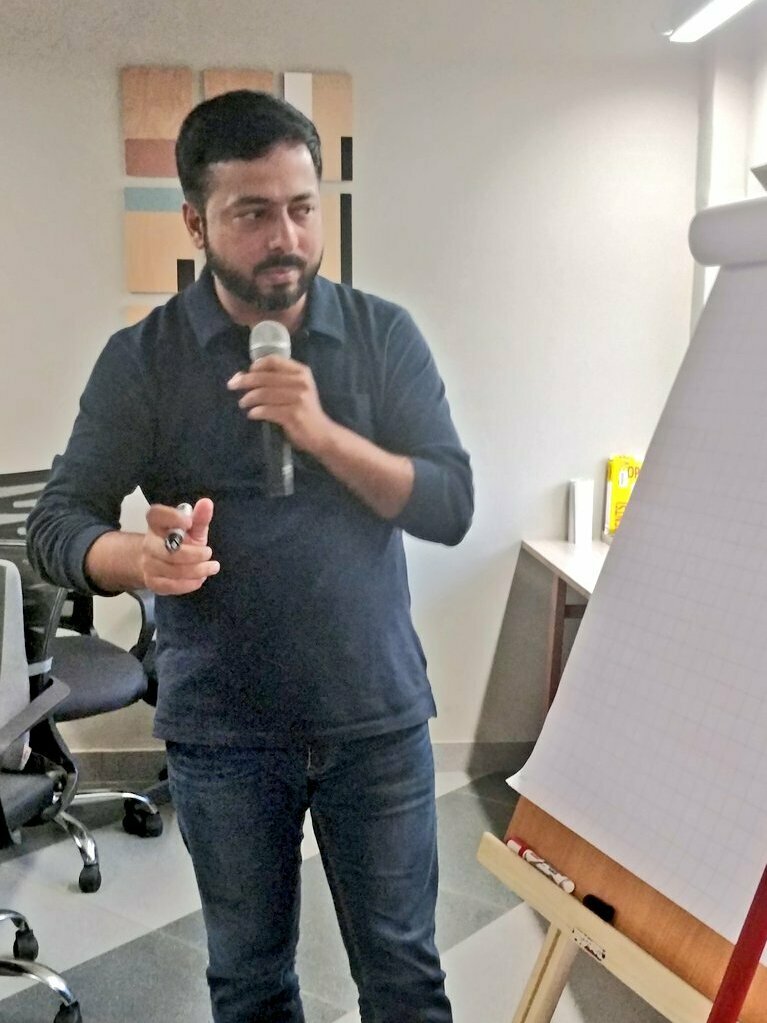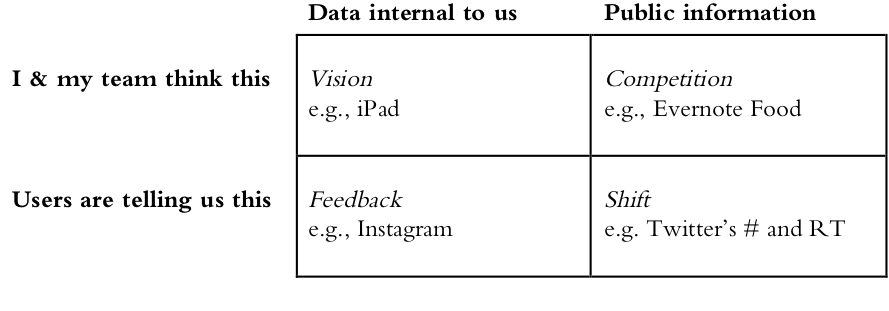How Prashant Singh Of PayTM Thinks About Product Management
- Published
- Reading Time
- 5 minutes
A packed house at the 2nd Blume Product Meetup, at LBB’s office in Delhi.
Every month as part of our community initiatives, Blume hosts meetups across Bangalore and NCR for tech, product and marketing leaders across our portfolio companies to meet, interact and learn from each other.
We recently saw our 2nd NCR Product meetup. Dhruv Mathur, cofounder LBB, anchors the NCR product community for Blume, supported by Bharat Pinnam, Blume’s community lead. For the event, Dhruv got Prashant Singh, VP – Product at Paytm for an interactive session. Here is a short writeup on the session and the learnings.
Prashant Singh joined Paytm when his startup Shifu was acquired by Paytm in ’16. Before Shifu he worked in Spice Labs. He has been building for mobile for last 13 yrs.
Dhruv teed off the session by asking Prashant as to how he approaches product management in the context of the choices and prioritization we need to make in product / design as well as the context of team building and processes, in an environment where there are multiple pulls and pressures. Prashant responded by setting out the larger context of product management as well as how he thinks of it, leading to a free flowing discussion, Q&A and some whiteboarding.
Prashant Singh gets ready to draw out his framwork for product feature prioritization!
I am structuring the conversation into three broad sections. Here they are.
Product management styles in organizations, and why self-awareness is key
Prashant stated that there are different definitions of product management, varying from org to org. At one extreme, product management becomes program management, especially in orgs which are very delivery-oriented. At the other end you have PMs who read a lot of medium posts and see themselves as the CEO of the product. The truth is a bit more complex, he said, and stated that the exact definition of product management and how it is perceived in the org is a function of two variables.
The 2 variables that determine the nature (and style) of product management in any organization are
- Leaning of the leadership teamQ: Is it sales heavy (Oracle) or design heavy (Apple) or engineering heavy (Facebook)?The leaning of the leadership teams dictates the priorities the product management team will be faced with. This doesn’t mean one type is wrong and the other is right. All three can work, but it needs strong self-awareness from the leaders of what kind of org you are.Why is self awareness critical? Having self awareness allows the PM and his team to offset / hedge against the downside of the dominant function, i.e., if the org is sales heavy and that then implies technical debt due to speed of development, then a good self aware PM will factor for this by creating a dedicated team for debugging / addressing technical debt related issues, effectively decoupling technical debt from the cadence of regular releases. Additionally such a PM can also set the right expectations to new hires so that they are aware of what to expect and can avoid frustrations and disappointment due to misplaced expectations.
- Nature of the industry you are inIf you are in a field that is like the X of India, i.e., X is a successful startup or industry in U.S. or China and it is likely to see growth in India, then what matters is time to market. Instead if you are in an industry or stage where you need to fashion new behaviour from the ground up, then speed of delivery doesn’t matter as much as spending time creating or getting to the right – then you have to teach / create new features like COD. if time to market is critical then you can’t spend too much on design.
A framework to understand launch / prioritization of products / product features
Prashant also shared an interesting framework that he uses to explain product management thinking and actions when it comes to launching / prioritizing products or product features. The framework is a simple 2×2 matrix. On the horizontal axis is the source of feedback or information that we are taking into consideration. On the vertical axis is how we are arriving at the decision. The interplay of these is a 2×2 matrix with the following quadrants.
Organizations such as Apple have PM teams that are vision-oriented – they have a strong point of view on the feature, and they base this on internal data and models. Then there are organizations such as Facebook, which may see its competition launch Stories and decide that it is best for its users to have this feature too. This is product-prioritization driven by competition. Similarly Evernote launched food when it saw a slew of recipe apps emerge.
Instagram pivoted from its original product Brbn to what it is now, on the basis of its users heavily using the photo uploading feature. Effectively its users were delivering strong feedback. Lastly your users can actually create product features as we saw with # and RT. He calls this shift.
Prashant also suggested that most organizations don’t function exclusively in one quadrant or the other but are instead a mix of the four.
Before product-market fit (PMF) he said they are 40% vision, 20% each for the others. After PMF, he said it is more like 60% vision, 20% competition and 10% each for the others.
Where can we see the signals that enable action, in each of the quadrants? Vision is easy, but what about Feedback? What abt Competition? According to Prashant, these are some of the signals to look out for.
- Vision: Team’s views, intuition, dashboard , gut feeling etc.
- Competition: Investor feedback, news, rise and growth of competitive apps, API / SDK user views and behaviour, exit paths of users (where do they go after your site?)
- Feedback: Bugs, CST, research findings, analytics, dashboard / key metrics that act as performance indicators such as speed of page load , time spent etc.
- Shift: Exit paths, change in underlying tech, where power users are going etc.
Working with designers, favourite books and more
Towards the latter part of the discussion, Prashant shared this thoughts on a variety of topics, prompted by Dhruv’s quick fire question format. This included such themes as how PMs should communicate with designers – by sharing with them the source of your thinking than merely expressing what you want them to do. This according to him has better impact and long-term alignment of designers with the product team.
Everything new is old actually. Quora is Ibibo Sawaal done right and Medium is FreshLimeSoda on steroids. Cash on Delivery is Value Payable by Post updated for the smartphone age. Virtual Gifts aren’t entirely new – remember Hello Tunes and Caller Ring Back Tones? Connecting the dots between what we see now and the past isn’t easy but it is important.
What books does he recommend for PMs or otherwise? Chaos Monkeys by Antonio Garcia-Martinez, an ex-PM at Facebook for how products get built in real life. Thinking Fast and Slow by Daniel Kahnemann was another. The last was an unusual one, called The Sovereign Individual by James Dale Davidson and William Rees-Mogg, which is apparently one of Peter Thiel’s favourite books, and is a cult hit in the Valley for its libertarian creed as well as for having predicted cryptocurrency (in ‘97).
And his favourite product? Well, it is the sketching app Paper (by design studio fiftythree). And lastly what would be build today if he could? Prashant mentioned two areas where he would like to work. The first was conversational commerce, which he said is unsolved. The second is generative design – essentially applying machine learning and 3D printing to rethink how we design any object, and thereby mimic how nature designs products in the real world. Take trees, rocks, lakes. There isnt a single straight line or right angle here. If we were to rethink design in a pure functional light, then how would it look?







